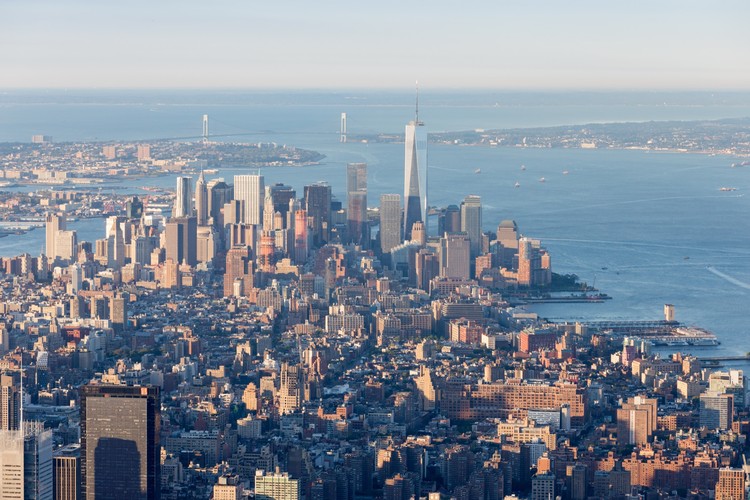
-
Architects: Skidmore, Owings & Merrill
- Area: 3500000 ft²
- Year: 2015
-
Photographs:James Ewing

Text description provided by the architects. One World Trade Center is a bold icon lling the skyline void left by the fallen towers. While the adjacent World Trade Center Memorial speaks of the past and of remembrance, One World Trade Center speaks about the future and hope as it rises upward in a faceted form. Depending on the viewer’s perspective and angle of light, One World Trade Center appears to shape-shift from a platonic solid reminiscent of the original twin towers to an obelisk recalling the Washington Monument.




















































